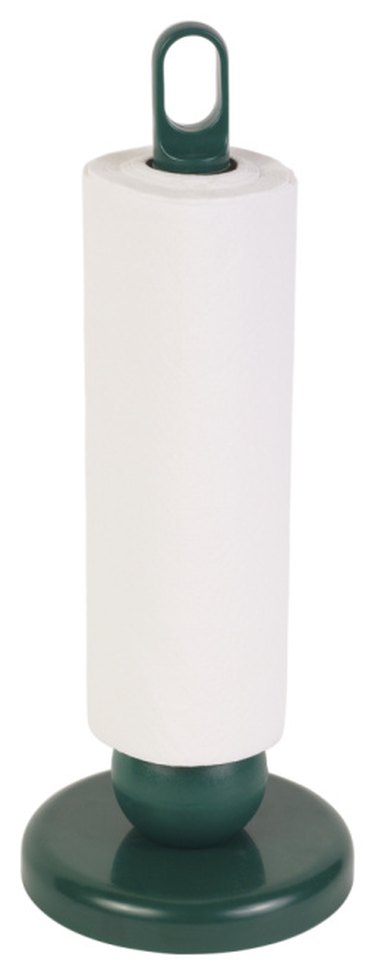Things You'll Need
Plastic gloves or medical gloves
Cleaning sponges
Clean rags, absorbent towels and paper towels
Cleaning brush or old tooth brush
Castile soap or liquid dish detergent
Hydrogen peroxide
Sodium thiosulfate if needed
Heavy item
Cotton balls (optional)
Rubbing alcohol if needed
Ammonia if needed

Povidone-iodine serves as a topical antiseptic. One of the challenges of removing povidone-iodine is keeping it off your skin, as the stain is time-consuming to remove. Povidone-iodine leaves a yellow or orange stain if it soaks into fabric or surfaces. Quick action can prevent fabric stains, as flushing out the iodine with water will keep it from staining. Set-in stains may be impossible to remove. Some commercial stain removers may remove iodine stains, according to the Ohio State University Extension.
Fabrics and Upholstery
Step 1
Blot as much of the povidone-iodine from the fabric as possible with a sponge or absorbent rag. Press gently and don't rub, as rubbing will drive the iodine deeper into the fibers. To clean clothing or other material, blot the stain from the back. To clean upholstery or carpet, blot on top of the stain working from the outside edges toward the center. The helps keep the spot from spreading.
Video of the Day
Step 2
Wash the stained area with castile soap or dish detergent solution. Rinse well. Repeat, if needed. For upholstery or carpet, add 1/2 tsp. of the liquid soap to 1/2 cup of cool water. Dip a sponge or rag into the solution, then wring it out. Dab at the stain repeatedly, rinsing the sponge or rag frequently as the stain comes up. When the iodine color stops coming up, leave the soap solution on for half an hour. Repeat, if needed.
Step 3
Sponge up the residue with cold water. Put an old towel over the spot, and weigh it down with a phone book in a plastic bag or another heavy item that won't be damaged by moisture. Leave it to soak up the excess moisture for an hour, replacing the towel as necessary.
Step 4
Treat stubborn povidone-iodine stains on upholstery with 1 tsp. sodium thiosulfate mixed into 1/2 cup cool water. Put on waterproof gloves to protect your skin from the chemical. Dab it onto the stain with a sponge. Rinse well with water. Repeat, if needed.
Hard Surfaces
Step 1
Immediately soak up any spots or puddles of povidone-iodine with a sponge or rag.
Step 2
Wipe the area with a damp rag or sponge to remove as much iodine as possible.
Step 3
Rinse the sponge. Pour 1 tbsp. of hydrogen peroxide onto the sponge, using just enough to make the sponge wet.
Step 4
Apply the hydrogen peroxide on the area discolored by the povidone-iodine. The hydrogen peroxide lifts the stain and lightens the discoloration. Leave it on for half an hour. Reapply to tough stains. Rinse the area well.
Carpets
Step 1
Mix 1 tbsp. each of white vinegar and liquid dishwashing detergent into 2 cups of warm water. Sponge the stain with the detergent/vinegar solution, using a clean, white cloth. Blot often frequently with a dry cloth until the stain disappears. Rinse fully with clear water. Blot carpet of excess moisture with a clean towel.
Step 2
Sponge the stain or flush with rubbing alcohol, if the stain remains, and blot with a clean cloth to remove the stain. Let the carpet air dry.
Step 3
Mix 1 tbsp. of ammonia and 1 tsp. of liquid dishwashing detergent into two cups of warm water, if the carpet stain remains. Sponge the stain with this cleaning solution and leave it for 30 minutes of more, blotting it with more solution and a clean, white cloth every 5 minutes. When the stain is gone, sponge the carpet with cold water and blot dry.
Tip
Rubbing hydrogen peroxide on stained skin with a cotton ball helps remove povidone-iodine.
Don't put washable items in the drier or a stained item near a heater until you've removed as much of the stain as possible. Heat sets stains.
Photo supply stores carry sodium thiosulfate as "acid fixer," according to the Ohio State University Extension. The website advises not using a product that contains other chemicals with the sodium thiosulfate.
Warning
Keep stain removal supplies and iodine away from food and out of the reach of children.
Avoid skin contact with chemical stain removers.
Don't mix stain removers or add bleach to stain removers.
Test stain removers, including hydrogen peroxide, in an unobtrusive area before trying it on the stain, to make sure it doesn't damage the fabric or remove color from a surface.
Video of the Day